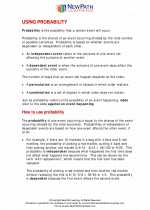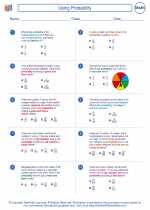Dividing
Dividing is the operation of splitting a number into equal parts or groups. When we divide one number by another, we are essentially finding out how many times the second number can fit into the first number.
Basics of Division
When dividing, we use a few key terms:
- Dividend: The number being divided.
- Divisor: The number by which the dividend is being divided.
- Quotient: The result of the division.
- Remainder: The amount left over when the dividend cannot be evenly divided by the divisor.
For example, in the division problem 15 ÷ 3:
- The dividend is 15.
- The divisor is 3.
- The quotient is 5 (15 ÷ 3 = 5).
- There is no remainder in this case, as 15 is evenly divisible by 3.
Steps for Long Division
Long division is a method used to divide larger numbers. The basic steps for long division are:
- Divide: Divide the leftmost digit of the dividend by the divisor. This is the first digit of the quotient.
- Multiply: Multiply the divisor by the first digit of the quotient, and write the result below the dividend.
- Subtract: Subtract the result from the previous step from the part of the dividend that has not been used yet.
- Bring down: Bring down the next digit of the dividend next to the result from the previous step.
- Repeat: Repeat steps 1-4 until there are no more digits to bring down.
Division Properties
There are a few key properties of division that are important to understand:
- Identity Property: The quotient of any number and 1 is the number itself. For example, 8 ÷ 1 = 8.
- Zero Property: The quotient of 0 divided by any non-zero number is 0. For example, 0 ÷ 5 = 0.
- Division by Zero: Division by zero is undefined in mathematics. It cannot be determined.
Practice Problems
Now that we've covered the basics of division, it's time to practice some problems. Here are a few to get you started:
- What is the quotient of 27 ÷ 9?
- Perform long division for 144 ÷ 12.
- Is it possible to divide by zero? Why or why not?
After practicing these problems, you should have a solid understanding of the concept of dividing numbers. Good luck!
.◂Math Worksheets and Study Guides Seventh Grade. Using Probability
Study Guide Using Probability
Using Probability  Worksheet/Answer key
Worksheet/Answer key Using Probability
Using Probability  Worksheet/Answer key
Worksheet/Answer key Using Probability
Using Probability  Worksheet/Answer key
Worksheet/Answer key Using Probability
Using Probability 

 Worksheet/Answer key
Worksheet/Answer key
 Worksheet/Answer key
Worksheet/Answer key
 Worksheet/Answer key
Worksheet/Answer key

The resources above cover the following skills:
Data Analysis and Probability (NCTM)
Understand and apply basic concepts of probability
Compute probabilities for simple compound events, using such methods as organized lists, tree diagrams, and area models.